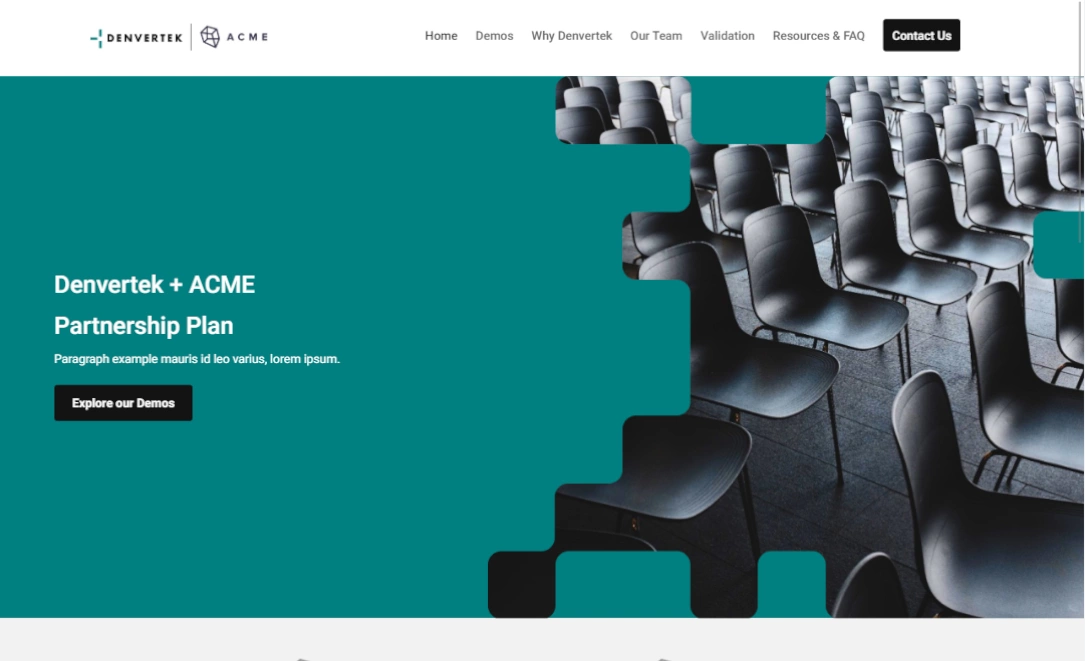Your company needs a website. A website is the heart and soul of your business, offering your general audience everything they need to know about your company. However, you’re considering microsites vs. websites because you may have heard the advantages of having a microsite. It’s become a recent trend for businesses to craft content experiences for their users in a fresh way.
A microsite is not a website, though. The two are distinct, and they should not be used interchangeably. If you’re new to microsites and are confused about the difference between the two, read on! We’ll discuss the differences between the two and what specific advantages a microsite offers.
Differences between microsites and websites
Microsites and websites share a lot of common features. On a technical level, they work the same way. Both microsites and websites operate through specific domains that move users from one webpage to another.
Ideally, both should be regularly maintained and updated, though microsites may require less of this depending on what they are being used for or if they are temporary.
There are some key differences between the two, though. Websites and microsites have different purposes and attributes that make them better suited for different things.
Websites are your primary online presence
A website generally serves as your business’s primary source of information. It’s the one-stop shop a user visits when searching for general information regarding a business or brand. Your company’s website is permanent and frequently visited, and the domain is specific to your organization’s name or brand, making it easier for users to remember and find.
The main website establishes a general relationship with your user. They should be able to find information that would be useful for anyone, including details about products and services, your organization’s history, and contact information. Think of your main web page as the “first date” your user has with your web presence: it should keep things simple and light, offering a general idea about who you are.
A microsite, on the other hand, is more like the fourth date.
Your microsite is an extension of your web presence. It’s targeted, loaded with CTA’s, and highlights lesser known or more specific aspects of your business. They’re generally created with a hyper-specific purpose in mind, so the content on a microsite is less general than on your main webpage. They may also forego some of the more general subpages featured on the main landing page.
Microsites are geared toward a specific audience
Because your website serves as a catch-all, it’ll be geared towards a larger audience. While you may have a specific market in mind, the content should be accessible for a wide reach to help you expand your audience. That means that copy should generally avoid being jargon-heavy and media may appeal to a broad collection of users.
While the main webpage can establish a relationship with users, its generality may keep them at arm’s length. If you’re looking to appeal to hyper-specific parts of your market, microsites allow you to extend your web presence with content that is created just for them.
A narrower audience is the perfect opportunity to tailor information and content, which serves to benefit everyone involved. It makes information that is relevant far more accessible, which can significantly impact engagement, not to mention profits.
A survey of four million respondents found that challenges in accessing needed content could cost businesses as much as $21.3 billion. Creating content for the right audiences with information that is easily accessible is a critical part of building strong marketing strategies. That’s where microsites shine.
Microsites are smaller and can be temporary
Because of their importance, websites are meant to be a permanent footprint of your business. The amount of work and design that goes into developing the main webpage can also be extensive.
You want to keep your website as robust as possible so that it serves a range of purposes for those visiting and seeking information. Branding, content, and outreach strategies may be more consistent with your existing campaigns to create a continuous experience for your users.
Microsites, as the name suggests, are smaller. As we’ve said, they hyper-focus on specific content for a specific audience. This means that loads of information-rich content is condensed down to a few subpages at most. This is a lot less to keep track of, making it easy to maintain and update.
Because of the ease of managing a microsite, it’s simple to fully revamp content depending on how things are working. A microsite can be as temporary as you want it to be, especially if it’s attached to a short-term campaign or seasonal event. This doesn’t mean you need to throw everything away, though. You can handpick the content that worked best and repurpose it for your website.
Advantages of a microsite not offered by a website
Microsites offer excellent targeting opportunities
Targeted content is a highly effective way to engage your audience and reach new market segments. Research suggests that well-targeted content increases a consumer’s likelihood to take action and can even change your audience’s perception of your brand.
Targeted marketing campaigns can be risky and expensive. Though these campaigns do generate analytics, they can be difficult to adjust and change after they’ve been implemented. This shouldn’t discourage you from leveraging the potential of targeted marketing or communication strategies, though.
Microsites are a cost-effective and flexible opportunity for you to make the most of targeted content.
With the right microsite builder, creating a targeted content experience is easy to do. If you pick the right tool, you won’t even need to involve a web design “expert.” At Zoomforth, we believe that everyone should have the capability to design robust microsites. Best of all, there’s no pressure to get it perfectly right on the first go because microsites are easy to edit and rework so that you always see a return on what you invest.
Creating a tailored content experience is not as difficult as it seems from a design standpoint, either. It just takes a little bit of planning and consideration of the audience you are hoping to reach.
Start by thinking of the general audience that you are reaching. Depending on what your microsite is being used for, this may already be a very focused group of people (for example, a procurement team). Even though you’d like maximum engagement, consider those who may be interacting with your microsite at a surface level.
This could be a sector of the market you are hoping to expand into, team members with specific concerns, or users who are least likely to move through all of your CTA’s. Here are some helpful questions to ask yourself as you break down your target audience:
- What are some of the key demographics that will affect the way a user engages with your microsite? Age? Gender? Income? Level of education?
- What role or responsibilities does this target hold? What is their main concern and what content is most relevant to them?
- Which action items are most important for this person to move towards?
- What niche interests or values does my target audience become involved with?
Some, of course, are more relevant for specific tactics than others. A narrow audience creates a narrowed focus, which means you can roll out the most technical, targeted, and punchy content geared towards generating action.
There’s less risk from experimentation with microsites
Looking for the opportunity to try new marketing strategies or use an updated sales approach?
Microsites are the perfect place to experiment with your web content and communication tactics. Because these web pages are extensions of your existing web pages, there is less need to remain consistent with existing branding.
Unlike websites, microsites have targeted, temporary purposes. The content featured here may not be relevant to everyone or permanently available. Creating web content for these purposes can be challenging on the main webpage because it can involve a lot of time building and breaking down what already exists on your website.
Microsites are more forgiving. They typically have a temporary nature and there’s less content to sift through and adjust. This makes it easy to roll out content and information-rich experiences to your audience without totally straying from an established approach. If something doesn’t work, it’s easy to adjust it or scrap it and start again.
It’s easier to gauge the user journey on a microsite
A website has lots of different content, and it can be difficult to monitor the user’s journey through your website past a surface level. Websites primarily focus on SEO so they can be the first thing a searcher sees. While the main page also offers analytics features, the nature of a microsite makes it possible for you to have access to valuable, granular-level data.
Understanding what, how, and when users engage with different content allows you to make the most out of what you create and pivot when engagement is low. Leveraging analytics is a core part of any targeted marketing strategy. Long gone are the days of depending on agencies to report back analytics, especially when using Zoomforth.
Zoomforth’s advanced analytics not only offer the micro and macro level data you need to know, but it also keeps you in the loop about user engagement in real time. Understanding the efficacy of your targeted communication strategies has never been easier and less involved.
Why choose between a microsite vs. a website when you have a microsite platform like Zoomforth?
You need to have a website, no question. A website is the heart of your company online. If you pick the right platform, though, you don’t need to even consider the debate of microsites vs. websites. You can start implementing microsites and expand your marketing efforts more and more.
Zoomforth allows you to leverage the craft, features, and robust experience of the main webpage on a microsite. Coupling content-rich experiences with targeted information will allow you to develop a unique extension of your brand’s web presence.
There’s no need to worry about the complication of web development, either. The drag-and-drop design of our microsite platform is easy enough for any on your team to use, with no coding required!
Make the most of your strategic web presence with Zoomforth.



